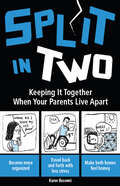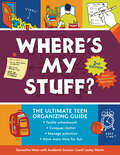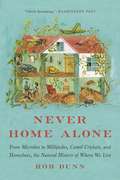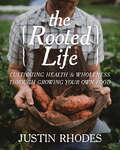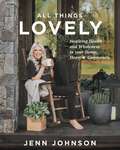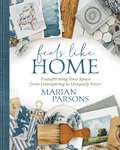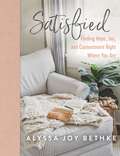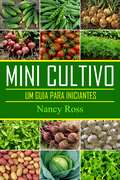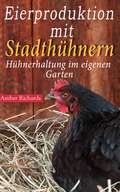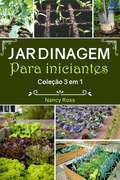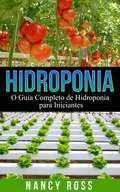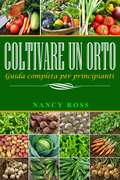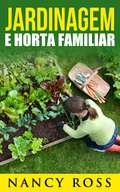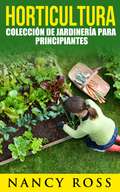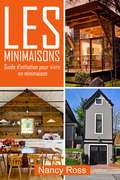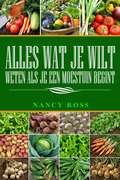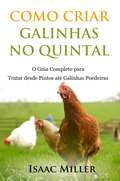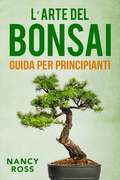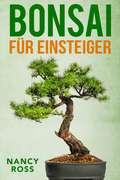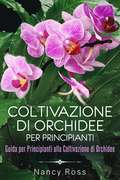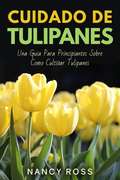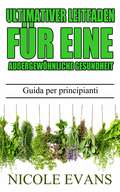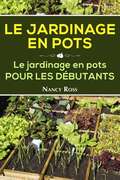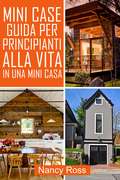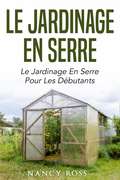- Table View
- List View
Split in Two: Keeping it Together When Your Parents Live Apart
by Karen BuscemiTackling an under-addressed but common difficulty for teens in split families, Split in Two is a valuable resource guide to help teens feel less crazed and confused, and more self-confident. Complete with: - Personal advice from teens who have lived or are living in two households - Tips on goal-setting and planning skills - Comic-book-style illustrations that give the book an edgy, modern, graphic novel feel
Where's My Stuff? 2nd Edition: The Ultimate Teen Organizing Guide
by Samantha Moss Lesley MartinA comprehensive guide for young adults on how to organize schoolwork, lockers, bedrooms, and even schedules. Take a quiz to identify your organizing style and get great advice about making decisions, purging closets, and creating the perfect space to relax, work, and store belongings. With fun and useful illustrations, easy-to-follow charts, and ample doses of humor, Where's My Stuff? is an incredible asset for anyone who wants to get it together and keep it together, for good. Newly updated for readers living in a digital world, this 2nd edition includes tips on managing online files and backups, digital planners, and more. Written in collaboration with professional teen organizer Lesley Martin.
Never Home Alone: From Microbes to Millipedes, Camel Crickets, and Honeybees, the Natural History of Where We Live
by Rob DunnA natural history of the wilderness in our homes, from the microbes in our showers to the crickets in our basements <P><P>Even when the floors are sparkling clean and the house seems silent, our domestic domain is wild beyond imagination. In Never Home Alone, biologist Rob Dunn introduces us to the nearly 200,000 species living with us in our own homes, from the Egyptian meal moths in our cupboards and camel crickets in our basements to the lactobacillus lounging on our kitchen counters. You are not alone. <P><P>Yet, as we obsess over sterilizing our homes and separating our spaces from nature, we are unwittingly cultivating an entirely new playground for evolution. These changes are reshaping the organisms that live with us--prompting some to become more dangerous, while undermining those species that benefit our bodies or help us keep more threatening organisms at bay. <P><P>No one who reads this engrossing, revelatory book will look at their homes in the same way again.
The Rooted Life: Cultivating Health and Wholeness Through Growing Your Own Food
by Justin RhodesA permaculture expert and popular YouTube Homesteader shares the skills and the delights of becoming a part of your own food story in this inspiring, accessible, and beautiful invitation to a more abundant, healthy, and connected life. Have you ever wanted to experiment with growing your own food but didn&’t think you had the space, the time, or the knowledge? Justin Rhodes thought the same thing—until after years battling systemic illness and struggling to provide the kind of wholesome food he wanted for his family, he bought a seed packet at the grocery store and was hooked! Justin discovered the miraculous potential and empowerment of working with nature to grow food for his family, and since that discovery, he has shared his self-taught skills with hundreds of thousands of growers via his popular YouTube channel and website. Whether you're looking for greater food security, better health, tastier food, to save or earn money, connect with your food source, this book is for you. If you're looking for a different kind of life—a life focused on health and wellness—take a look down the road less traveled.Looking for every opportunity to pass his hard-earned knowledge onto others, Justin Rhodes created this inspiring and practical invitation to growing your own food and experiencing a more connected, sustainable lifestyle, no matter where you live or how much space you have. Filled with beautiful and inspiring photographs from the Rhodes&’ homestead and chock full of resources, including gardening plans, everything you need to know about raising chickens, tips for how to get your kids involved, and even recipes for how to serve up your home-grown goodness, The Rooted Life provides you with the inspiration, the encouragement, and the practical wisdom that you need to begin the journey to a more rooted life.
All Things Lovely: Inspiring Health and Wholeness in Your Home, Heart, and Community
by Jenn JohnsonTake the first steps to living as a healthier and happier woman and discover the spiritual importance of acceptance, gathering, and community. Jenn Johnson has come to realize that the pursuit of perfection is unrealistic and unfair. Instead, we need to pause and reflect on what's in front of us. But how? How can we slow down? How can we remain focused on what's important and do things with intention? What can we pursue that represents God's heart for us, things that are true, noble, right, pure, admirable, excellent, praiseworthy? By pursuing all things "lovely." Living a holistic and holy life, a life marked by beauty and truth, means being mindful and intentional about what we put in our bodies, how we present ourselves to the world, the spaces we create, and the people we let into our lives. When we set our minds on what is lovely, we begin to see ourselves and the world as God intended. We begin to be wholly renewed.
Feels Like Home: Transforming Your Space from Uninspiring to Uniquely Yours
by Marian ParsonsDiscover how to achieve your dream home on an affordable budget using these inspiring pictures, practical tips, and easy-to-implement tutorials. Most of us don&’t live in a dream home that was custom built to suit our tastes. We have to work with a house that brings its own style, quirks, and personality to the table. But imagine walking into this house, but it&’s perfectly designed and decorated with your style in mind—a home that fits you like a well-tailored outfit and yet is as comfy as your favorite pair of pajamas. What would that home look like exactly? How would it feel to live in a home styled specifically for you? The truth is, every home should feel like a custom home and not have to break the bank. In Feels Like Home, DIY makeover queen Marian Parsons (a.k.a. Miss Mustard Seed) teaches you what she&’s learned over the years, sharing budget-friendly practical tips that will inspire you to change your space from &“blah&” to beautiful, from a builder-grade to character-rich home. Each chapter will guide you through detailed, easy-to-implement tutorials for projects, makeovers, decorating ideas, and tips for handling common challenges. Special note-taking spaces are also included for recording your own design ideas. Room by room, you will be empowered to transform your house into the home of your dreams!
Satisfied: Finding Hope, Joy, and Contentment Right Where You Are
by Alyssa Joy BethkeStop focusing on what you lack and start feeling grateful and satisfied with what you have! Touching on topics like fear, worry, dissatisfaction, anxiety, and body image, Alyssa Bethke walks you through issues that rob you of your joy and helps you recognize them for what they are: distractions. With all of its expectations and contradictions, this world can take a major toll on us. Be skinny, but not too skinny. Work and hustle but stay home and be a good mom. Be wild and free while tidy and pure. Love your husband but be independent. In Satisfied, Alyssa Bethke shares a compelling collection of relatable essays that will help you embrace and cultivate beauty in your life. Along with healthy recipes and cozy home images, Satisfied will provide you with the knowledge that you are not alone in your fight to be fulfilled. Alyssa shows you the ways in which you are enough—not only for those around you, but for yourself.
Mini Cultivo - Um Guia Para Iniciantes
by Nancy Ross Combo TranslationsVocê quer aprender os conceitos básicos de mini cultivo? Se você quer aprender mini cultivo para jardinagem, pecuária, ou auto suficiência este livro vai ajudar! Aqui está uma prévia do que você vai aprender ... Truques simples para maximizar seu espaço Melhores Plantas para mini cultivo Escolhendo o solo certo Controle de pragas Cuidar das ervas daninhas Pecuária que faz bem com mini cultivo? Dicas para tornar o mini cultivo mais fácil Muito, muito, mais!
Eierproduktion mit Stadthühnern
by Amber Richards Beatrice RueckertMeinen Sie, man müsste auf dem Land leben oder einen Bauernhof haben, um Hühner zu halten? Meinen Sie wirklich? Hühnerhaltung in der Stadt ist immer weiter verbreitet und die Vorteile sind bemerkenswert. Falls Sie glauben, daß Hühner viel Arbeit machen und es einfacher ist, mal schnell im Laden um die Ecke ein Dutzend Eier zu kaufen, dann haben wir Neuigkeiten für Sie. Eierproduktion mit Stadthühnern: Hühnerhaltung im eigenen Garten beendet das Rätselraten. Dieses Buch hat Antworten auf die häufigsten Fragen, erklärt den Weg zur eigenen Hühnerschar und versorgt Sie mit dem Wissen, das Sie brauchen um richtig loszulegen. Ihre Familie mit frischen Bio-Eiern zu versorgen, ist eine Leichtigkeit. Zu wissen, wo Ihre Eier herkommen und wie sie erzeugt wurden, ist heutzutage von unschätzbarem Wert. Schauen Sie mal rein: Gründe für die Hühnerhaltung Bevor es losgeht mit der Hühnerschar Welche Hühnerrassen kommen in Frage? Woher bekommt man Hühner? Mit oder ohne Hahn? Einen Hühnerstall errichten Wieviele Hühner benötigt man? Hühner mit Futter und Wasser versorgen Hühner gesund halten Wichtige Gesundheitsvorsorge in der Hühnerhaltung Einsammeln und Säubern von Hühnereiern Sich um Hühner zu kümmern ist ein lehrreiches 4H-Projekt für Kinder. Gefiederte Freunde haben einen großartigen Charakter, lehren Verantwortung und bringen die Familie zusammen. Wenn Sie über Hühnerhaltung nachdenken, sind Sie hier richtig.
Jardinagem Para Iniciantes Coleção 3 em 1
by Nancy Ross Thiago ZoeVocê quer aprender tudo sobre jardinagem para iniciantes? Aqui vai uma prévia sobre tudo que o livro trata quando o assunto é jardinagem em recipientes: •Os Benefícios de Jardinagem em Recipientes •Conseguindo os Recipientes para os seus Jardins •Criando um Bom Ambiente para os Recipientes de Plantas •Escolhendo a Hora Certa Para Plantar •As Melhores Plantas para Plantar no seu Jardim de Recipientes •Como Manter Pestes Longe •Dicas para Ajudar Suas Plantas a Prosperar A segunda parte do livro explica tudo que você precisa saber sobre estufas: •Coisas a Considerar Antes de Começar uma Estufa •As Vantagens da Jardinagem em Estufa •Montando um Jardim de Estufa •Crescendo as Plantas em sua Estufa •Formas de Controlar o Clima na Estufa •Alguns dos Melhores Métodos de Plantação para Estufa •Como se Livrar das Pestes •Algumas Dicas Importantes para Jardinagem em Estufa Na terceira parte do livro você vai aprender tudo sobre jardinagem vertical: •Montando a Base que Você Precisa em seu Jardim •Os Benefícios de um Jardim Vertical •Trabalhando na Manutenção de seu Jardim Vertical •Conseguindo Espaço para as Plantas •Escolhendo as Plantas Certas •Algumas Modificações Extras •Algumas Dicas para seu Jardim Vertical É o livro perfeito pra quem quer aprender tudo que precisa para começar um jardim seja em casa ou apartamento. Cheio de conselhos de especialistas e todas as informações necessárias para suas plantas e flores prosperarem!
Hidroponia: O Guia Completo de Hidroponia para Iniciantes
by Nancy RossO livro nos mostra as vantagens do uso dos sistemas hidrôponicos como alternativa ao sistema tradicional de cultivo em solo. Apresenta de forma clara algumas técnicas e manejos, incluindo as ferramentas, criação de espaços, iluminação e cores apropriados para a obtenção dos melhores resultados nos cultivos.
Coltivare un orto: Guida completa per principianti
by Nancy Ross Ilaria GhezziVUOI IMPARARE COME COLTIVARE UN MERAVIGLIOSO ORTO CASALINGO? Questa guida ti sarà utile sia che tu voglia scoprire quali sono gli ortaggi migliori da coltivare, sia che tu voglia imparare come coservare i tuoi prodotti a lungo termine!!! Ecco un'anteprima dei contenuti che potrai leggere... TROVARE GLI ATTREZZI GIUSTI ORTO CASALINGO ORTO CONDIVISO I PRIMI PASSI PER INIZIARE IL TUO ORTO GLI ORTAGGI MIGLIORI DA COLTIVARE CONSERVARE GLI ORTAGGI FRESCHI TUTTO L'ANNO I BENEFICI DI COLTIVARE UN ORTO E TANTO ALTRO ANCORA!! Ecco un'anteprima degli ortaggi che imparerai a coltivare: GRANOTURCO FAGIOLINI POMODORI PISELLI PEPERONI E TANTI ALTRI!
Jardinagem e Horta Familiar
by Nancy Ross Yeda De CamposEste livro dá o passo a passo para jardinagem familiar é um excelente guia para principiantes. Dá os benefícios do plantio de vegetais não só para a saúde como também para o sistema nervoso(ervas calmantes). Extremamente recomendado para quem busca uma vida saudável, poderá ter controle sobre a qualidade de seus próprios alimentos.
Horticultura: colección de jardinería para principiantes
by Carolina Beltramo Nancy Ross¡Descubre los conceptos básicos del cultivo de vegetales, marihuana, hierbas medicinales e hidroponía, todo en un solo libro!
Les minimaisons - Guide d’initiation pour vivre en minimaison
by Nancy RossCherchez-vous un moyen facile d’apprendre à concevoir votre minimaison et y vivre dans la simplicité? Que vous vouliez construire ou concevoir votre minimaison, ou tout simplement savoir si ce mode de vie vous convient, ce guide d’initiation saura vous être utile. Voici un aperçu de ce qu’il contient : Les avantages d’habiter une minimaison Le financement de votre minimaison Trouver l’emplacement idéal Astuces de rangement pour maximiser l’espace Idées pour la cuisine Conceptions de salon, de salle de bain, de chambre à coucher Conseils et astuces pour habiter en minimaison Et bien plus encore!
Alles wat je wilt weten als je een moestuin begint
by Nancy Ross Dick StadaWIL JE LEREN HOE JE EEN GEWELDIGE MOESTUIN MOET OPZETTEN? Of je nou wilt leren wat de beste groentesoorten zijn of hoe je je groente het hele jaar door goed kunt bewaren, dit boek zal je daarbij helpen! Hier is alvast iets van wat je zult leren… HET JUISTE TUINGEREEDSCHAP EEN TUIN BIJ HUIS EEN VOLKSTUIN EEN STAPPENPLAN BIJ HET OPSTARTEN VAN EEN TUIN DE MEEST GESCHIKTE GROENTESOORTEN DE GROENTE HET HELE JAAR BEWAREN DE VOORDELEN VAN HET TUINIEREN EN NOG VEEL MEER! Hier is alvast een lijstje van de groentesoorten die je leert kennen: MAÏS SPERZIEBONEN TOMATEN DOPERWTEN PEPERS EN NOG VEEL MEER!
Como Criar Galinhas no Quintal: O Guia Completo para Tratar desde Pintos até Galinhas Poedeiras
by Isaac Miller Anabela SousaCriar galinhas no quintal é muito mais simples do que você possa pensar, e são muito mais simples de manter do que outros animais de estimação. Bastará controlar as suas galinhas durante uns minutos por dia, e em pouco tempo, você deverá estar recolhendo ovos frescos diários. Neste livro, iremos rever os passos necessários, desde obter e cuidar dos pintos, fazer a transição das suas galinhas de quintal para um galinheiro exterior, e o que esperar pelo meio. Agarre numa bebida e em qualquer coisa para comer, descubra um lugar confortável para se sentar, e juntos vamos descobrir o prazer que as galinhas de quintal podem proporcionar. Neste livro veremos consigo: Espaço Necessário e Tamanho do Galinheiro Escolher uma Raça de Galinha Como Cuidar dos Pintos Quando os deve levar para o Galinheiro Mantendo o Galinheiro e o Cercado Limpos Como Alimentar as Galinhas Tenha uma vida alegre com este livro e os seus novos amigos.
L’arte del bonsai: guida per principianti
by Nancy Ross Barbara ParuttoVolete Apprendere I Concetti Di Base Per la Coltivazione Dei Bonsai? Ecco cosa imparerete con questo libro: Scegliere l’ambiente giusto per il bonsai Fornire al bonsai le sostanze nutritive di cui necessita Potare il bonsai Gli strumenti più utili per prendersi cura del bonsai Rinvasare il bonsai E molto altro ancora!
Bonsai für Einsteiger
by Nancy Ross Melanie B. FrankWollen Sie die Grundlagen des Bonsai Gärtnerns für Einsteiger erlernen? Hier ist eine Vorschau dessen, was Sie lernen werden… Die Auswahl der richtigen Umgebung für Ihren Bonsai Baum Dem Bonsai die geeigneten Nährstoffe zur Verfügung stellen Das Schneiden des Bonsai Baumes Die besten Werkzeuge zur Pflege Ihres Bonsai Baumes Das Umtopfen des Bonsai Baumes Und viel, viel mehr!
Coltivazione di Orchidee per Principianti: Guida per Principianti alla Coltivazione di Orchidee
by Nancy Ross Roberto SpigarelliVuoi Imparare Come Funziona La Coltivazione Delle Orchidee Per I Principianti? Ecco un'anteprima di cosa imparerai... Perché Dovrei Coltivare le Orchidee? Di Cosa Hanno Bisogno Le Orchidee Requisiti Importanti Per La Coltivazione Delle Orchidee Il Rinvaso Delle Orchidee La Propagazione per Coltivare più Orchidee Molto, molto altro ancora!
Cuidado de Tulipanes: Una Guia Para Principiantes Sobre Como Cultivar Tulipanes
by Nancy Ross Jorge Javier Paniagua RangelQuieres Aprender Todo Sobre El Cuidado De Los Tulipanes? Aquí Te Muestro Un Poco De Todo Lo Que Aprenderás... La Planeación Y Preparación Sembrando Los Bulbos De Tulipán Cuidado De Los Tulipanes Plantando Tus Tulipanes En Una Maseta Proporcionar La Cantidad Correcta De Agua Para Tus Tulipanes Proveyendo La Cantidad Correcta De Luz Solar Para El Crecimiento De Tus Tulipanes Trabajando Con Tulipanes De Cabezas Múltiples Y ¡Mucho, Mucho Más!
Pflanzliche Heilmittel - Ultimativer Leitfaden für eine außergewöhnliche Gesundheit
by Nicole Evans Marcus A. PfeifferBuchbeschreibung: ENTDECKE DEN NATÜRLICHEN WEG ZU HEILEN UND BEHANDLE DEINE GESUNDHEITSPROBLEME MIT PFLANZLICHEN MITTELN! Ob Sie sich weniger gestresst fühlen wollen, die Erkältung loswerden möchten oder Ihre Haut reinigen wollen; pflanzliche Heilmittel können Ihnen dabei behilflich sein Hier ist eine Vorschau einiger der gesundheitlichen Probleme, die behandeln und heilen können ANGST DEPRESSION STRESS SCHMERZEN GEWICHSTKONTROLLE GÄNGIGE KRANKHEITEN HAUTPROBLEME VIELE, VIELE MEHR! Hier ist eine Vorschau was Sie lernen werden... WIE SIE IHRE EIGENEN KRÄUTER ANBAUEN DIE 30 AM HÄUFIGSTEN FÜR MEDIZINISCHE ZWECKE VERWENDETEN KRÄUTER PFLANZLICHE HEILMITTEL GEGEN ANGST, DEPRESSIONEN UND STRESS PFLANZLICHE HEILMITTEL ZUR SCHMERZLINDERUNG PFLANZLICHE HEILMITTEL ZUM ABNEHMEN PFLANZLICHE HEILMITTEL BEI GÄNGIGEN KRANKHEITEN PFLANZLICHE HEILMITTEL BEI HAUTPROBLEMEN VIELES, VIELES MEHR!
Le Jardinage en pots Le jardinage en pots pour les débutants
by Nancy Ross Gaulthier MarrelVOULEZ-VOUS DECOUVRIR LES TENANTS ET ABOUTISSANT DU JARDINAGE EN POTS ? Voici un aperçu de ce que vous apprendrez... Trouvez les pots pour votre jardin Créer un bon environnement pour vos plantes en pots Choisir la bonne période pour plante Les meilleures plantes à faire pousser dans vos jardinières Conseil pour aider vos plantes à s'épanouir Et bien plus encore ! Voici un aperçu de certains des légumes que vous apprendrez à faire pousser... Salades Oignons Tomates Carottes Radis Concombres Haricots Betteraves Crucifères Aubergine Poivons Et bien plus encore !
Mini Case Guida per Principianti alla Vita in una Mini Casa
by Nancy Ross Elisa StucchiVolete scoprire come progettare in modo facile la vostra mini casa e vivere felicemente al suo interno? Se siete alla ricerca di consigli su come costruirla, idee su come organizzarla, o non sapete ancora se una mini casa fa per voi, questo libro vi aiuterà. Ecco un’anteprima di cosa troverete all'interno: I lati positivi delle mini case I modi di finanziare la vostra mini casa Trovare la posizione perfetta Semplici trucchi per avere più spazio e vivere meglio Idee per la cucina Design di soggiorno, bagno e camera da letto Idee e trucchi per vivere bene in una mini casa E molto, molto altro!
Le jardinage en serre: Le jardinage en serre pour les débutants
by Nancy Ross Gaulthier MarrelVOULEZ-VOUS DECOUVRIR LES TENANTS ET ABOUTISSANT DU JARDINAGE EN SERRE ? Voici un aperçu de ce que vous apprendrez... Installer un potager dans une serre Cultiver des plantes dans votre serre Manières de contrôler le climat dans la serre Certains des meilleures méthodes de plantation dans la serre Comment se débarrasser des insectes nuisibles Et bien plus encore !
